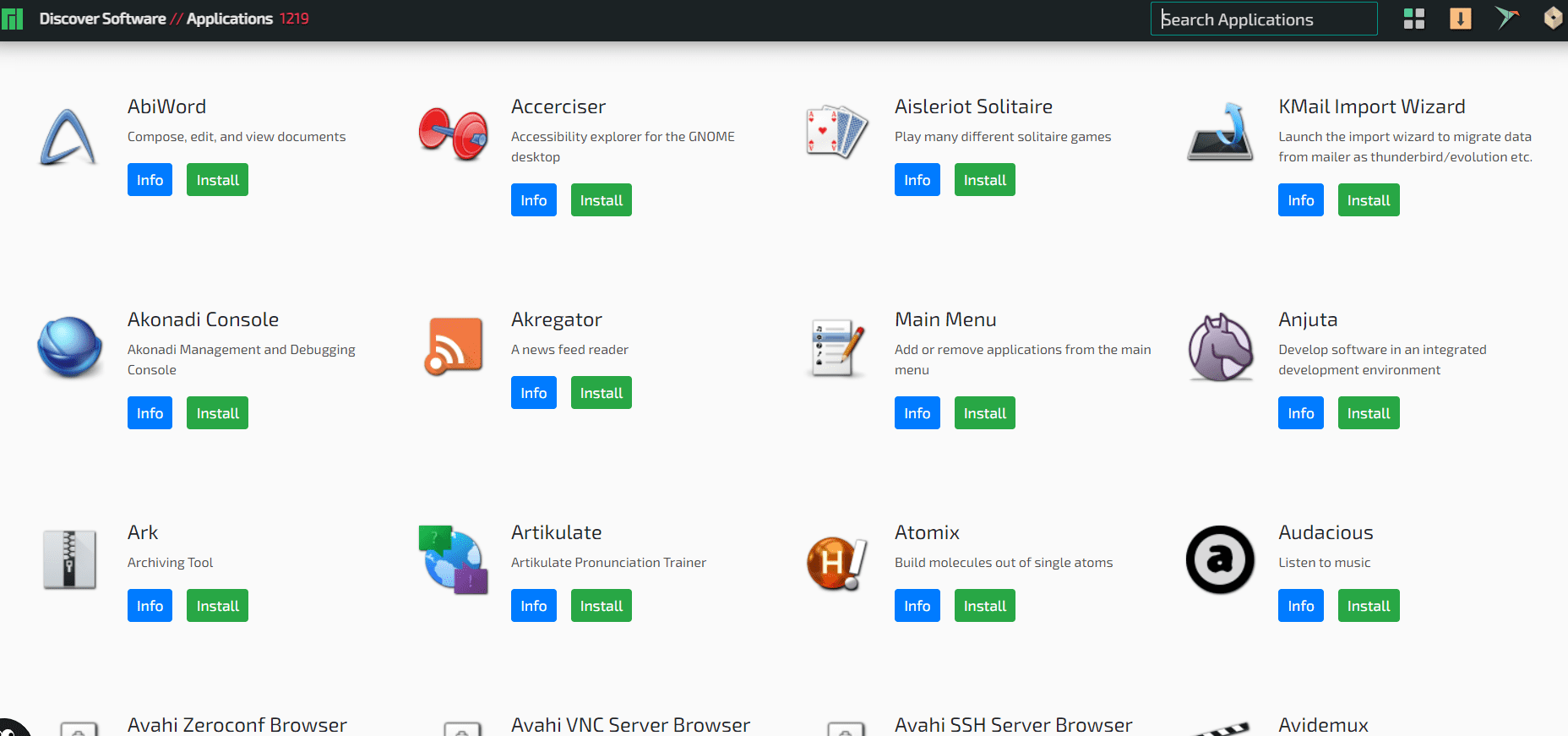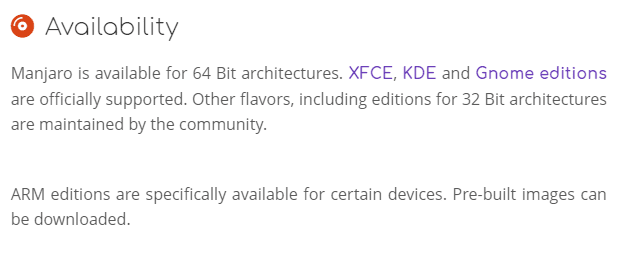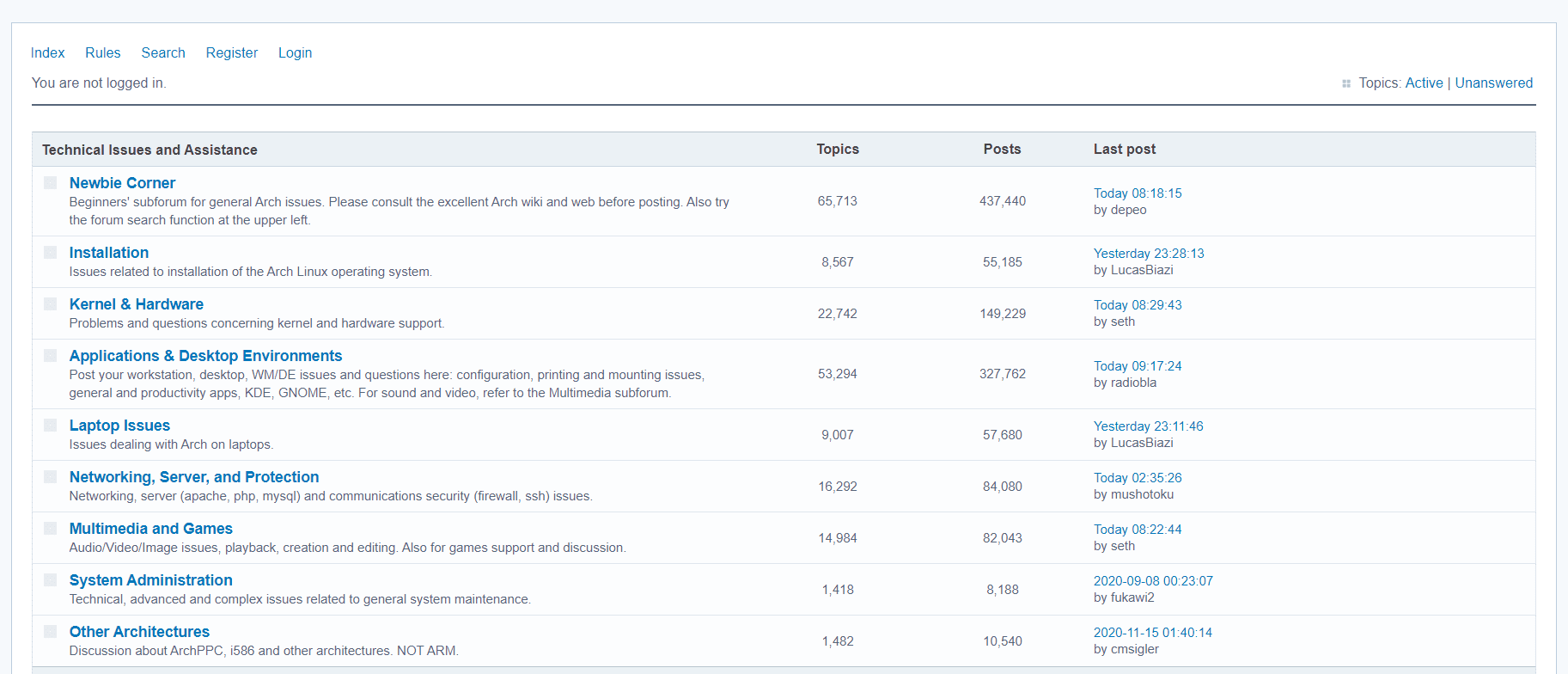Recently, we made a comparison of Manjaro and Linux Mint. Both are excellent distros and offer great value for users with specific requirements. Today, we are going to compare Manjaro and Arch Linux.
Manjaro is an Arch Linux based distro, and that makes the comparison even more interesting. As Manjaro is Arch-based, then why we need it in the first place? Can we not use Arch Linux and be done with it? By the end of the comparison, you will learn why Manjaro establishes its own identity even if it is based on Arch Linux.
There is no doubt, Ubuntu-based distros are the most beginner-friendly. If you do not fall in the beginner’s domain, you need to try more challenging and powerful distros such as Arch Linux. The history of Arch is beautiful. However, only two distros rule the space, i.e., Manjaro and Arch Linux itself.
Let’s first go through their brief introduction before comparing them.
What is Arch Linux?
Arch Linux is one of the cutting-edge Linux distros that lets you thrive on customization and minimalism. If you are a beginner, then Arch Linux is not for you. The biggest difference you will see is its comprehensive installation process, which is completely different from other Linux/GNU based distributions.
If you have never installed Arch Linux, you will find that it doesn’t offer a Graphical User Interface(GUI) during installation. Yes, you need to install the operating system using a standard command-line interface. This makes the installation a lot challenging — giving you the need to work with commands. To get started, you need to download the Arch Linux image from their site. Once done, you need to work through their default zsh shell.
However, if you are not familiar with this approach, you need to take the help of documentation or online tutorials that provide a step-to-step guide to complete the installation.
Arch Linux defines itself as a flexible yet lightweight Linux distribution. It comes with support for the x86-64 architecture. Arch Linux also has a helpful community.
Its five principles drive arch Linux: Simplicity, Modernity, Pragmatism, User Centrality, and Versatility.
So, is Arch Linux is for everyone? Absolutely not!
You should not use it:
- If you are a beginner who doesn’t want a distro that needs the effort to manage and use.
- If your open source ideology is different and you only want to use a distribution defined as free software from GNU, Arch Linux might not work for you.
- If you want an operating system that runs out of the box, Arch Linux is not for you.
- Arch Linux offers rolling GNU/Linux distribution, and it is not suitable for users who are not comfortable using it.
Lastly, we take a quick look at the key features offered by Arch Linux as below:
- It is a minimalistic Linux distribution that does not require a powerful system to run efficiently.
- It offers stability out of the box.
- It is lightweight, which means you can run it on old machines.
- Arch Linux uses rolling release. This means you do not have to wait for six months like other distributions following the conventional developmental model such as Ubuntu. With the rolling update, your new updates or features are accessible when you want them to use.
- Arch Linux offers a state-of-the-art bleed edge solution where you get access to tools and features that can help you solve your problem at hand.
- Arch Linux offers simplicity for the right user. It doesn’t force users to try out other tools or GUI solutions. You are your own driver when you are using Arch Linux — which means you are free to use the system as per your need or demand.
What is Manjaro?
Manjaro is an Arch-Linux based distro that provides a good alternative to macOS and Windows. It comes equipped with multiple desktop environments, which means you are free to use your chosen environment.

Manjaro is not like Arch-Linux in its approach. Manjaro aims to provide the usability that you want from a user-friendly operating system. Based on Arch Linux, Manjaro is ideal for users who want more control over their operating system. This means if you want an OS for work or development environment, you can use Manjaro to its full potential.
All-in-all, it is easy to say that Manjaro is an excellent way for beginners to get started with Arch-Linux based operating system.
Manjaro comes with a lot of Arch Linux features, and that’s pretty obvious. However, do not expect Manajro to offer everything that Arch Linux has to offer. Of course, there are limitations in terms of features.
One big feature that carries over to Manjaro from Arch Linux is the rolling update model. With it, you can get a rolling update as soon as they are available. In the case of Manjaro, it maintains its official repositories — which means that Manjaro generally waits a little longer before making the package available to the audience as it can be more stable.
This approach makes Manjaro more stable and balances out the latest packages’ need to stabilize most users. If you like cutting-edge technology without the need to wait, then Manjaro is not for you. However, it does fit ideally for both risk-takers and understands that stability will bring them more good in the long run.
Unlike Arch Linux, Manjaro is not shy of using the graphical user interface(GUI) when it needs to. So, you will find the installation process similar to that of Ubuntu.
You will instantly notice Manjaro comes with support for KDE, XFCE, and GNOME desktops. None of these are set to default, and you are free to download the one that fits your needs. However, by default, the first option to download at Manaro is XCFE.
Key Features of Manjaro
Manjaro offers tons of features. As Arch Linux based, let’s first see the key features similar to Arch Linux, followed by new things offered by Manjaro itself.
- Manjaro offers efficiency, power, and speed — all packed in one package.
- As it is based on Arch Linux, you get access to cutting-edge software.
- The rolling update model ensures that you do not have to download versions to keep up to date. Manjaro’s rolling model update also ensures that they only push packages that are stable for the audience — providing the much-needed stability that Arch Linux can lack from time to time.
- As a Manjaro user, you also get access to Arch User Repository(AUR)
Unique Manjaro features
- Manjaro offers a user-friendly installation process.
- It automatically detects the computer hardware and installs the necessary software for the system.
- It offers access to its own dedicated software repository, which contains stable packages.
- Offers support multiple kernels and easy installations.
Manjaro vs. Arch Linux: Similarities and Differences
Now that we have introduced both Manjaro and Arch Linux, it is now time to compare them. Below, we will go through different criteria that will help you understand which one is for you.
Let’s get started.
Package Management and Distribution
This section will take a look at the package management and distribution method utilized by both the distros.
With Arch Linux, you get access to the Pacman package manager. It is a console-based package manager that lets you manage your system easily with access to a simple binary package format. Arch utilizes its own packages with Arch User Repository(AUR) and the official repositories.

Manjaro takes a different approach. It utilizes Pacman as a package manager but offers access to Graphical Software Manager. You can choose any of the pre-installed Graphical Software managers that come with it.
When it comes to distributions, you will find both Manjaro and Arch Linux offering rolling distribution. However, they do not have the same way to manage it.

Manjaro Packages
Rolling distributions releases updates on an ongoing basis rather than releasing an annual or six-month update. This means that users get access to the latest packages without the need to wait for a long period of time.
However, both Arch Linux and Manjaro takes a different approach. Arch Linux releases the package as soon it is finalized. Manjaro, on the other hand, takes time before the package is released. You can think of Arch Linux users as beta testers. So, Manjaro basically waits for the package to be stable before it is released to the audience.
So, if you are an end-user who loves new updates but want to take as minimal as a risk, Manjaro is for you. However, if you want the absolute cutting-edge, then Arch Linux is the way to go.
Installation
Installation is a crucial step in user experience. If you are part of the Linux users who want the installation process as simple as possible with a graphical user interface, then Manjaro is something that you should pick.
If you are an avid Linux user who thrives on customizing their operating system, Arch Linux is for you. Arch Linux’s lack of graphical user interface is due to the KISS principle(Keep it simple, stupid) — this means that controlling how the OS will be installed depends on the user. The user may have to take the manual help to install it — and that’s okay if you are tech-savvy and know what you are doing.
Manjaro is new and offers a graphical interface approach to installation — similar to what other popular distros offer, including Ubuntu or Linux Mint. And, that’s why you will find Manjaro presenting itself as an alternative to Windows and macOS as it carries the simplistic approach and ease of use.
Arch Linux users can also give Manjaro a try to learn what Manjaro brings to the table. However, avid Arch Linux users may want more control over graphical user interface aid.
Desktop Environment
Both Manjaro and Arch Linux are flexible when it comes to desktop environments.
When you are using Arch Linux, you can choose which one to get started. Arch Linux offers convenient bundles that can be used to install packages whenever you need them. So, what are your choices when it comes to the Arch Linux desktop environment? Well, you can choose from Cinnamon, Budgie, GNOME, GNOME flashback, Deeping, KDEP Plasma, XFce, Sugar, LXQt, and Sugar. As you can see, you have plenty of choices at your disposal.
Manjaro does provide options but is limited when it comes to choosing the desktop environment. With Manjaro, you can only pick between GNOME, KDE, and Xfce. When you first download Manjaro from its website, the Xfce is selected as the first choice. This might mean that it is the default desktop environment offered by them, but in reality, it just happens to be the first option rather than the obvious one. Of course, you can choose to download other ISOs with different desktop environments. However, there is a workaround that lets you install other windows managers through community editions.

Community
The last criteria that we are going to take a look at the community. Arch Linux offers an excellent community through its ArchWiki. ArchWiki is the place where you can get answers for most of your problems. Arch Linux also has an official discussion board and IRC Channel where you can meet like-minded users.

So, how do Manjaro fairs in comparison to Arch Linux? Well, it is not that great. Most of the Manjaro users initially start with the distro shift to Arch Linux when they found out that they are limited.
Conclusion
You cannot go wrong with Arch Linux or Manjaro. Arch Linux offers a simpler approach if you know what you are doing. Manjaro, on the other hand, provides an abstraction to what Arch Linux is capable of. So, if you are a beginner who wants to try Arch Linux, but do not have the expertise to handle it, then Manjaro is for you. It is also okay to use Manjaro to always pick up the distro based on what you need and not on what’s better on paper.
So, which one are you going to pick? Comment below and let us know.


2 comments
Arch Linux
“I use arch btw”